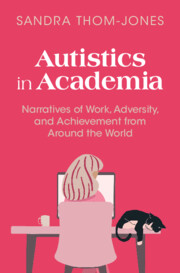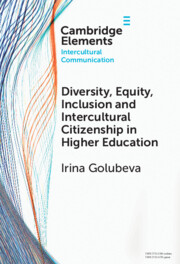867 results
Implementation and evaluation of a group peer mentoring and leadership development program for research faculty in academic medicine
-
- Journal:
- Journal of Clinical and Translational Science / Volume 9 / Issue 1 / 2025
- Published online by Cambridge University Press:
- 26 March 2025, e63
-
- Article
-
- You have access
- Open access
- HTML
- Export citation
Evaluating ecosystem services of summer cover crop mixtures for organic cabbage production
-
- Journal:
- Renewable Agriculture and Food Systems / Volume 40 / 2025
- Published online by Cambridge University Press:
- 21 March 2025, e8
-
- Article
-
- You have access
- Open access
- HTML
- Export citation
10 - Cultural competence and cultural safety
- from Part III - Skills for practice
-
-
- Book:
- An Introduction to Community and Primary Health Care
- Published online:
- 27 March 2025
- Print publication:
- 20 March 2025, pp 160-173
-
- Chapter
- Export citation
A qualitative study of diversity in precision medicine research: The development and stakeholder assessment of a Diversity Decision Map
-
- Journal:
- Journal of Clinical and Translational Science / Volume 9 / Issue 1 / 2025
- Published online by Cambridge University Press:
- 18 March 2025, e78
-
- Article
-
- You have access
- Open access
- HTML
- Export citation
A “Necessary Evil”? Keeping Women Out of Medical Schools Won't Fix What Ails the Japanese Medical Profession
-
- Journal:
- Asia-Pacific Journal / Volume 17 / Issue 7 / April 2019
- Published online by Cambridge University Press:
- 14 March 2025, e2
-
- Article
-
- You have access
- Open access
- Export citation
Chapter 2 - How Did We Get Here?
-
- Book:
- Autistics in Academia
- Published online:
- 06 March 2025
- Print publication:
- 13 March 2025, pp 15-25
-
- Chapter
- Export citation

Autistics in Academia
- Narratives of Work, Adversity, and Achievement from Around the World
-
- Published online:
- 06 March 2025
- Print publication:
- 13 March 2025
Chapter 2 - Methodological Considerations in Participatory Research with Adolescents
-
- Book:
- Technological Innovations in Participatory Health Research with Adolescents
- Published online:
- 20 February 2025
- Print publication:
- 27 February 2025, pp 40-59
-
- Chapter
- Export citation
Module 7 - Diversity and the Conventional Medical World
-
- Book:
- Facing Death Across Cultures
- Published online:
- 20 February 2025
- Print publication:
- 27 February 2025, pp 115-149
-
- Chapter
- Export citation
Asking Different Questions: Development and implementation of Clinical and Translational Science Award diversity, equity, and inclusion and community engagement training course for TL1 scholars
-
- Journal:
- Journal of Clinical and Translational Science / Volume 9 / Issue 1 / 2025
- Published online by Cambridge University Press:
- 26 February 2025, e69
-
- Article
-
- You have access
- Open access
- HTML
- Export citation
Tombs as Evidence of Religious Diversity in the Sacred Valley, Peru (ca. AD 1000–1532)
-
- Journal:
- Latin American Antiquity , First View
- Published online by Cambridge University Press:
- 11 February 2025, pp. 1-23
-
- Article
-
- You have access
- Open access
- HTML
- Export citation

Diversity, Equity, Inclusion and Intercultural Citizenship in Higher Education
-
- Published online:
- 10 February 2025
- Print publication:
- 27 February 2025
-
- Element
- Export citation
A three-tiered mentorship approach for supporting high school students interested in science, technology, engineering, and mathematics (STEM) careers
-
- Journal:
- Journal of Clinical and Translational Science / Volume 9 / Issue 1 / 2025
- Published online by Cambridge University Press:
- 10 February 2025, e54
-
- Article
-
- You have access
- Open access
- HTML
- Export citation
New record of Calcinus morgani (Crustacea: Decapoda: Anomura: Diogenidae) from the Andaman Islands, and a key to Calcinus species in the Andaman and Nicobar Islands
-
- Journal:
- Journal of the Marine Biological Association of the United Kingdom / Volume 105 / 2025
- Published online by Cambridge University Press:
- 06 February 2025, e10
-
- Article
- Export citation
Analysis of genetic diversity in caigua (Cyclanthera pedata (L.) Schrad.) in mid-hill of the Indian Himalayas
-
- Journal:
- Plant Genetic Resources , First View
- Published online by Cambridge University Press:
- 06 February 2025, pp. 1-12
-
- Article
- Export citation
3 - Absolutism and Enlightenment
-
- Book:
- Berlin
- Published online:
- 13 February 2025
- Print publication:
- 30 January 2025, pp 38-56
-
- Chapter
- Export citation
Addressing the concept of total pain in palliative care: A postcolonial South African hospice view
-
- Journal:
- Palliative & Supportive Care / Volume 23 / 2025
- Published online by Cambridge University Press:
- 28 January 2025, e35
-
- Article
-
- You have access
- Open access
- HTML
- Export citation
The evolution of similarity-biased social learning
-
- Journal:
- Evolutionary Human Sciences / Volume 7 / 2025
- Published online by Cambridge University Press:
- 20 January 2025, e4
-
- Article
-
- You have access
- Open access
- HTML
- Export citation
Promoting inclusion in COVID-19 research for diverse Hispanic/Latino(x) populations: Recommendations from the RADx® Underserved Populations Hispanic/Latino/Latinx working group
-
- Journal:
- Journal of Clinical and Translational Science / Volume 9 / Issue 1 / 2025
- Published online by Cambridge University Press:
- 20 January 2025, e31
-
- Article
-
- You have access
- Open access
- HTML
- Export citation
Chapter 6 - Exploring diversity and communication
- from Part 2 - Communicating in organisations
-
- Book:
- Communication Skills for Business Professionals
- Published online:
- 25 February 2025
- Print publication:
- 15 January 2025, pp 131-162
-
- Chapter
- Export citation


